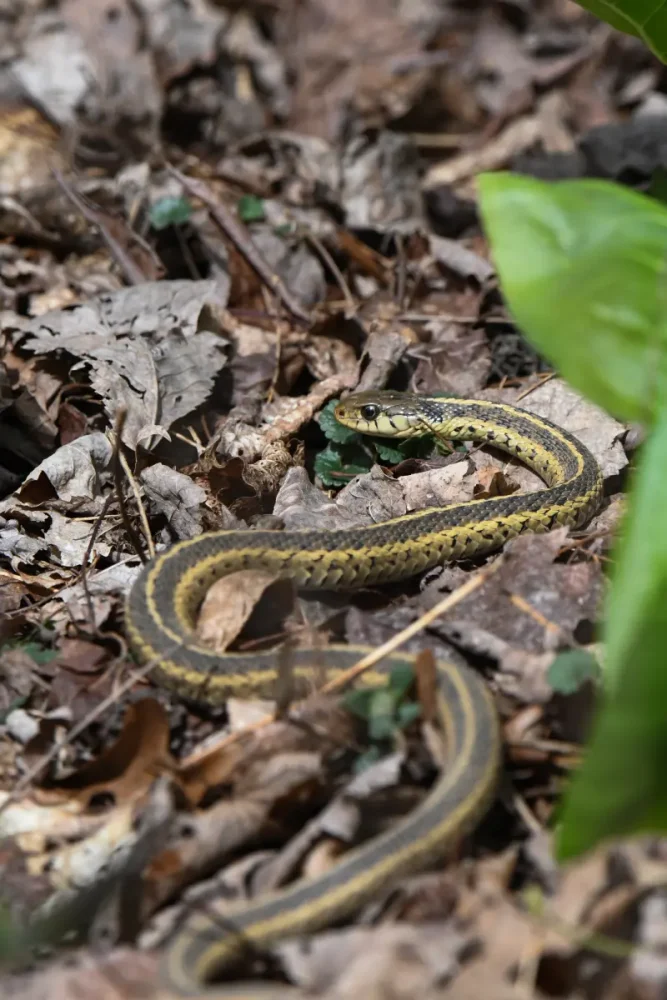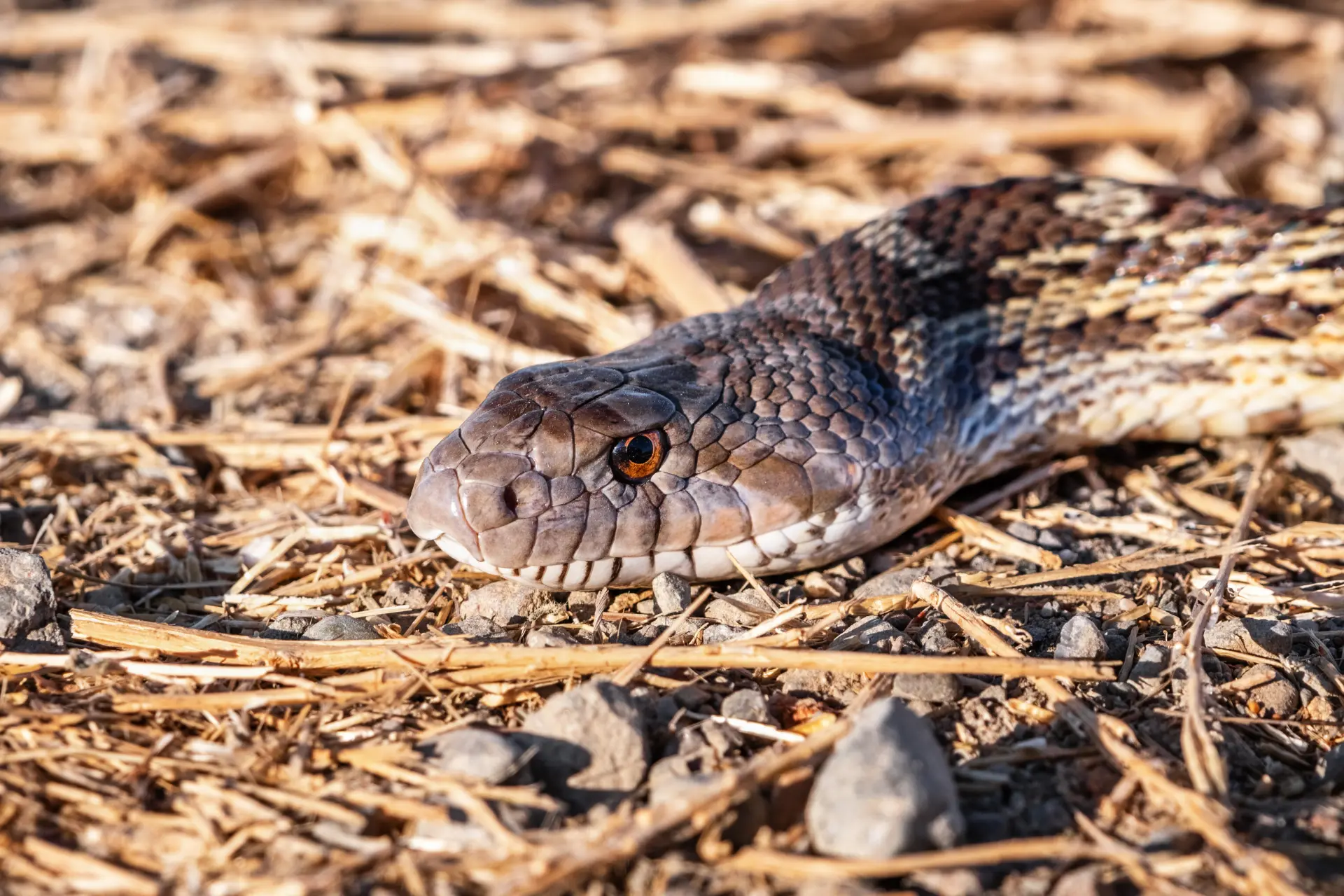When you’re out in the wilderness or managing your own property, safety is the priority. Snakes are a present reality in almost every camping environment or rural backyard. Learning how to make snake traps to keep yourself protected isn’t just a hobby; it’s a necessary skill for any outdoorsman.
Whether you are dealing with an intruder in your garden or you are in a survival situation looking for a meal, a reliable trap allows you to manage the situation from a distance. You don’t want to get too close to venomous snakes.
To make sure you are ready for any outcome, you should also check out first-aid procedures for snake bites. It is better to know what to do and not need it than to be caught off guard. This guide covers the most effective DIY traps, how to use them, and the safest way to handle a capture.
Before we start: While DIY trapping is a valuable skill for homeowners and survivalists, it is important to remember that the safest way to handle a snake encounter is to call a professional wildlife relocation service. If you are ever in doubt about the species or your ability to manage the capture, play it safe and contact an expert
Choosing the Right Trap for Your Situation
Before you start building, you need to decide which trap fits your needs. If you are at home and have access to tools, the Professional Box Trap is the most secure option.
However, if you are deep in the woods and need something immediate, the Survival Bottle Trap is your best bet.
| Feature | Wooden Box Trap | Plastic Bottle Trap |
| Best For | Property management / Large snakes | Survival / Small snakes |
| Difficulty | Medium (Requires tools) | Very Easy |
| Durability | High / Reusable | Low / Disposable |
| Safety | Very Secure | Moderate |
Method 1: The Survival Bottle Trap
If you’re camping and don’t have a woodshop handy, you can make a highly effective trap using a common 2-liter plastic bottle. This is perfect for catching smaller snakes that might be hanging around your campsite.
- Prep the Bottle: Take an empty, clean 2-liter bottle. Cut the top off about two inches below where the neck stops tapering.
- Invert the Funnel: Take the top piece you just cut off, flip it around, and insert it back into the bottle opening pointing inward. This creates a funnel that let’s the snake in but makes it nearly impossible to find the small exit hole.
- Secure and Bait: Poke a few small holes in the sides for air and scent distribution. Place your bait inside (an egg or a small piece of meat). Use duct tape or small sticks to secure the funnel to the base.
- Placement: Lay it on its side in a shadowy area where you’ve seen movement.
Also read: Genius camping meal ideas you should try.
Making A Box Trap For Snakes

Building a box trap is the most reliable way to catch nearly any type of snake on your property. Making a snake trap is not that difficult. The key is making sure you have the right supplies before you start.
Don’t skip steps or use faulty materials; you don’t want your trap to break before you have a chance at catching anything.
You might want to learn how to make this trap to keep yourself safe when camping, but catching one to cook is a good enough reason, too. You can learn which ones are good to eat in our guide on edible snakes.
To build this, you’re going to need a large wooden box that seals entirely. If there are any holes in the box, the snake can escape. Keep in mind that snakes can get through narrow spaces easily.
Your box needs to be sealed so the snake doesn’t find its way back out. Cover up any holes before you get started. You can use mud, wood filler, or whatever you have at hand.
Materials and Tools Needed
- Six pieces of plywood (or a pre-made wooden box).
- Plexiglas or another thin, solid material for the “one-way” doors.
- 6 hinges (at least).
- One secure latch.
- Hammer and nails (or a drill and screws).
- A saw to cut your Plexiglas and wood.
The Plexiglas doors don’t need to be large, as you’re only covering a small hole that is large enough for the snake to enter.
You want two pieces of Plexiglas so they can meet in the middle to form a “gravity gate.”
You’ll want at least 6 hinges to attach your entrance doors and your top release door. This allows the snake to get in easily without being able to push the door back open from the inside.
Also read: Internal vs External Frame Backpack: Everything You Should Know
Building the Trap
If you don’t have a box already, you can build one. Make sure it’s large enough for the snake to fit entirely inside, as some species can be quite long.
Each side must be a tight fit because even a small crack is enough for a snake to squeeze through. Nail the sides together firmly so the box stays together even if it gets tumbled over.
To start, you need six pieces of wood. You don’t need the box to be perfectly square, but you need four pieces that are the same size for the sides and two pieces for the ends.
- The Entrance: Take one of the four matched pieces. This will be your floor/entrance. Cut a hole in the center large enough for the snake to pass through. Make sure the hole doesn’t take up the entire piece of wood, or the snake might get stuck, making it dangerous for you to handle later.
- The One-Way Gate: Cut your Plexiglas into two pieces. Each piece should cover about half of the hole you just cut. Attach these to the wood using hinges so they swing upward into the box.
- How it Works: Set this piece down so the Plexiglas hinges face inside the box. When the snake moves over the hole, it pushes the Plexiglas up and enters. Once it is inside, the Plexiglas falls back down by gravity. The snake cannot push the doors downward to exit. This forms a solid floor until you come back.
- Assembly: Take two of your other side pieces and nail them to your entrance floor to make a “U” shape. Ensure the nails are flush with the wood so they don’t stick out and injure you or the snake.
- The Top Release Door: Instead of nailing the top piece down, attach it using hinges on one side and a latch on the other. This is your exit door. You want this to open easily for you but stay completely secure when the latch is closed. Snakes will push at the top of the box trying to find a way out, so the fit must be tight.
- The Ends: Take your two remaining matched pieces and nail them firmly to the ends of your “tube.” You should now have a fully enclosed wooden box with a one-way entrance on the bottom and a latched door on the top.
Also read: Best Odor Proof Bags for Backpacking
Setting Your Trap

The easiest way to catch a snake is to find where it lives. While snakes don’t build nests like birds, they are creatures of habit. They often reuse the same rodent burrows, rock crevices, or hollow logs for shelter.
If you can find one of these entry points, set your trap directly over the opening. This ensures the snake has to enter the box when it emerges.
If you don’t know where the “home” is, look for areas where you have seen the snake repeatedly. They prefer spots that offer two things: warmth and food. Sunny rocks near tall grass or areas with high rodent activity are prime locations.
Snakes will return to these spots again and again. You can also check out our guide on how to prevent wild animal attacks for more tips on staying safe in these high-activity zones.
If you aren’t sure of the exact path the snake takes, it may take longer to catch it. Be prepared to wait. You can also check our review of the top first aid kits to ensure you have the right gear on hand while you’re working in snake territory.
What is the Best Bait for Snakes?
Snakes are predators, so they want something that smells like a meal. Chicken eggs and mice or rats are the best baits because they are at the top of the snake’s food pyramid. But anything you think a snake can eat will usually work.
- Scent Trailing: If you use a frozen/thawed mouse from a pet store, drag it on the ground leading up to the trap entrance. This creates a scent trail that the snake’s tongue will pick up, leading it right to the door.
- Live Bait: Some trappers use live mice in a small, separate cage inside the trap. This provides movement and noise, which are high on a snake’s list of triggers. However, many find this unnecessary and prefer using fresh eggs or scented lures.
- Placement: Simply place your bait inside the box or bottle. If you are using the wooden box trap we built, make sure the bait is far enough from the entrance that the snake has to get its entire body inside to reach it.
Also read: Best Boonie Hat: My Top Picks for the Year
Safety Notes
Catching the snake is only half the job. The most dangerous part is what happens next. Whether you are relocating the animal or preparing it for a meal, you must handle the trap with caution.
- Transporting: Never put your hands near the entrance of the trap. Use the handle on your box or carry it by the corners. Even with the one-way Plexiglas doors, a snake can strike through small gaps if they exist.
- Relocation: If you want the snake gone for good, move it at least 1 to 2 miles away from your property. Any closer and it may find its way back. Find a similar habitat (wooded area, near water, etc.) so the snake can survive. [NOTE: Check local state laws on relocation, as some areas require you to release snakes on the same property where they were caught].
- The Release: This is why we built the top door with hinges and a latch. Place the trap on the ground, undo the latch with a long stick or tool, and tip the box so the door falls open. Back away immediately. Let the snake come out on its own.
Legal and Ethical Considerations
Before you set a trap, you need to know what you are catching. Many snakes, such as the Indigo snake or certain rattlesnake species, are protected by law.
Killing or even moving these snakes can result in heavy fines. If you catch a snake and realize it is a protected species, your best move is to call a professional wildlife relocator.
Common Questions (FAQ)
What time of day are snakes the most active?
Snakes are ectotherms, meaning they rely on the environment for heat. They are most active early in the morning when it’s cool out and again at dusk. They like tall vegetation and shadowy places to hide or hunt. They seek out dark places during the heat of the day to rest and cool down.
What is the best homemade snake repellent?
Natural substances like sulfur, clove oil, cinnamon oil, and vinegar are often used to repel snakes. You can pour these around the perimeter of your property or where you have seen activity. While these can help, a physical barrier or a trap is always more reliable for removing a specific snake.
A Few Final Words
Once you’ve built your trap and set it up, you can enjoy the rest of your trip or your time outdoors with more peace of mind. Keep checking the trap daily to ensure it’s ready for any snake that comes your way.
Let us know what you think of this design and your reasons for trapping. Are you protecting your family, or are you trying out a new menu item? We want to know your results.

Daniel is a gear freak when it comes to hiking, climbing and camping. He went to REI Outdoor School to meet new people and learn best practices. Don’t even try to argue with him about the latest backpack or ice axe, he tried most of them. Daniel’s dream is to climb Mount Everest.

Maybe we’ll try it your way from now on. We had the unfortunate experience of trying to pull a garter snake off a glue trap once and even though my friend was very careful and was pulled very slowly it literally started to rip it’s skin off. We poured vegetable oil to the pad to remove the stickiness.
A non-stick spray also works but poor guy! Snake traps are “kinder” to these creatures, that’s why I prefer them to stick-ons like the one you’ve used.
My brother almost stepped on a big snake while walking down the dark street near our house one night. We considered placing a snake trap. I’d also recommend it because it is highly economical. You can use it again and again and you just have to order more glue inserts. The Box Trap seems creative and effective. I’ll share it with friends and then we’ll try making one.
I’m glad no one got hurt. Do try our DIY snake traps and share your creation with us. Hope all goes well, though. Be careful!